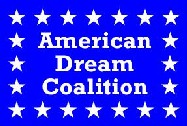Congestion Myths
Myth: We Can't
Build Our Way out of Congestion
Reality: Cities that have
built more roads in the past two decades have had less congestion
growth.
Highway opponents have repeated this claim so
often that many people believe it without question. Yet it is functionally
equivalent of telling phone
companies to give up on fiber optics and go back to copper wire, or telling
Ford to stop making Mustangs and go back to making Edsels.
As Anthony Downs
points out in his book, Stuck in Traffic, people often respond to congestion
by changing their travel habits. Many people travel
earlier or later than they would prefer, and others find different routes
that are less congested. A few switch from cars to other modes such as
transit or walking, and some choose not to travel at all. In the long
run, congestion can lead companies to move their offices and factories
to less
congested areas.
Building new road capacity will lead many of these people
to go back to their previous habits. Companies might move back downtown,
employees might
take less advantage of flex time, and drivers on more congested routes
will move to the new road. This means that a four-lane road that is congested
at 8 am and 6 pm might still be congested at those times after it is
expanded to six lanes. But it doesn't mean that the expansion was not
worthwhile,
as it gives people the opportunity to travel on routes and at times that
are convenient to them.
The Texas Transportation Institute's annual mobility
report shows that many urban areas have managed to keep congestion in
check by aggressively
building new roads. Houston, for example, has nearly doubled its freeway
and arterial system in the last eighteen years. As a result, Houston
congestion has increased by less than 8 percent, compared with more than
25 percent
in the other nine of the nation's ten largest urban areas.
It is theoretically
possible to eliminate congestion by building enough roads. But this would
not only be very expensive, it would be wasteful
if much of the new road capacity were used only a few hours a day. Value
pricing, meaning road tolls that are higher during congested periods
than other times of the day, can smooth out traffic peaks and dips by
encouraging
people to drive at less-congested times of the day. According to commuting
expert Alan Pisarski, commuters make up less than half of morning rush-hour
and less than a third of
afternoon
rush-hour
driving, so value pricing has the potential of greatly reducing peak-period
demand even if few commuters have flexible hours.
Myth: Building New Roads Simply Induces
More Driving
Reality: Adding road
capacity in congested areas provides important benefits for nearly everyone
in the area.
This argument, which is closely related
to the "can't build our way
out of congestion" myth, is even more absurd. What private business
wouldn't love to provide a good or service in which more supply simply
creates more demand? Ford is painfully aware that simply building more
Edsels doesn't mean people will buy them, and the phone companies have
learned to their sorrow that building more fiber-optic cables won't lead
people to talk more on the phone or send more data over phone lines.
In
the same way, it is absurd to think that building more roads simply leads
to more travel. As explained in the "can't build our way out
of congestion" myth, the observation that new roads are quickly congestion
is explained by people changing their travel habits to take advantage of
new road capacity.
The idea that induced demand could be a problem is based
on the notion that driving produces costs without benefits. One gets
a picture of Americans
as mindless robots, brainwashed by auto manufacturers and oil companies
to drive around and spew pollution aimlessly. In fact, every trip people
make has a purpose that is worthwhile to the people making the trip.
By any measure, highways are one of the most successful
government programs in America. They are heavily used for very valuable
purposes and they pretty
much pay for themselves (most subsidies going to local streets, not highways).
Yet highway opponents somehow turn that very success into a seeming failure. |

